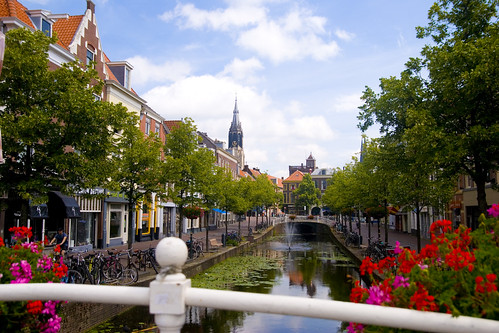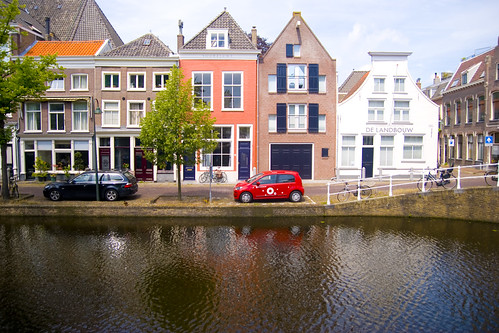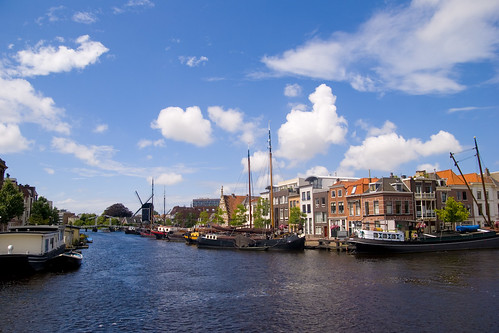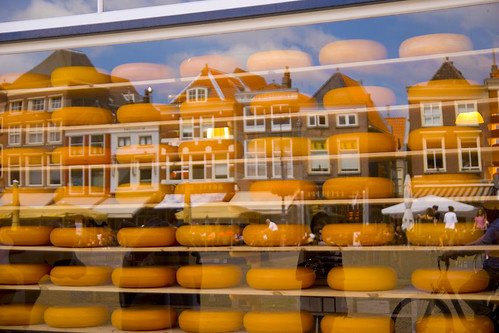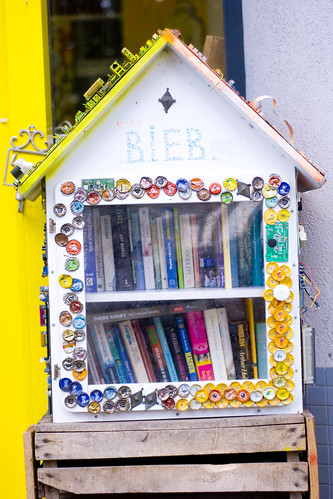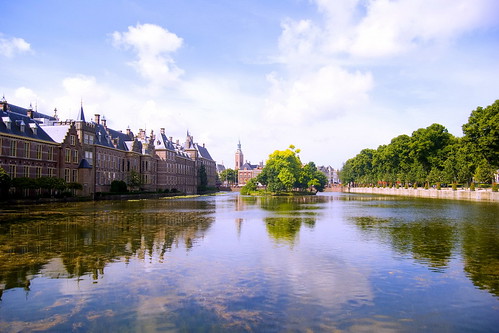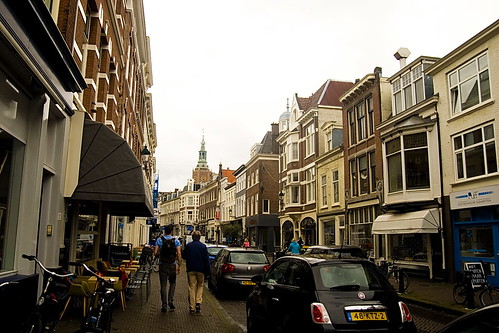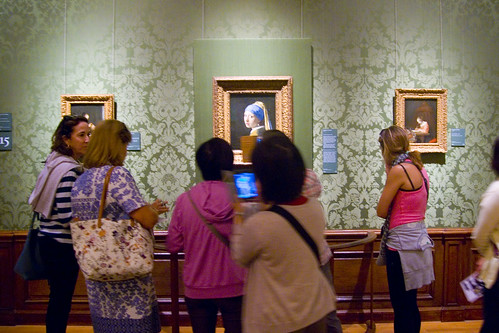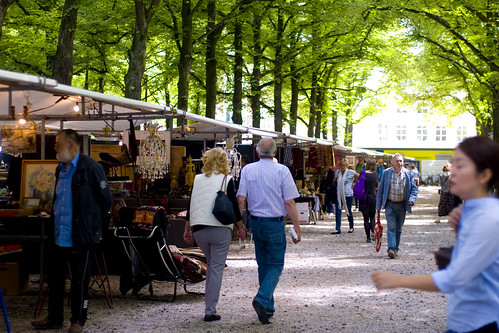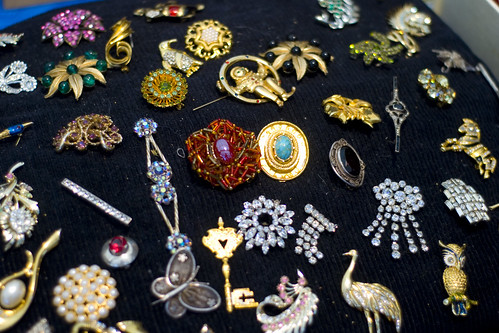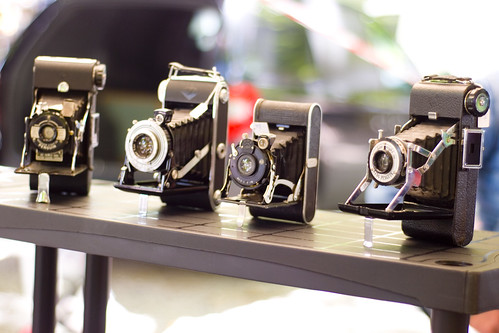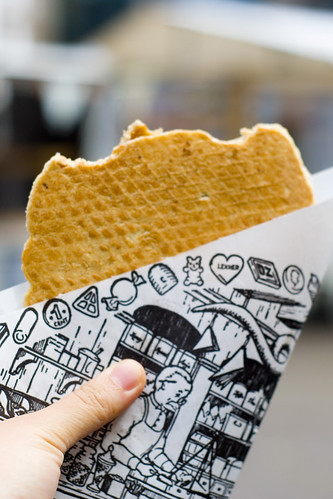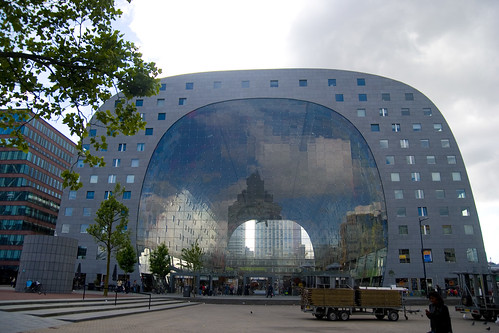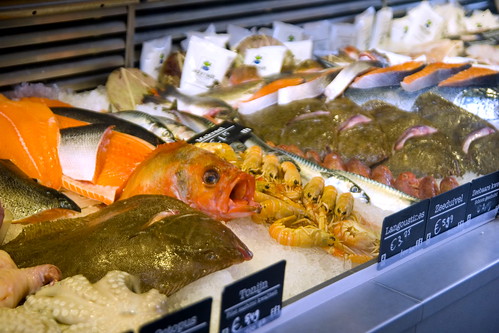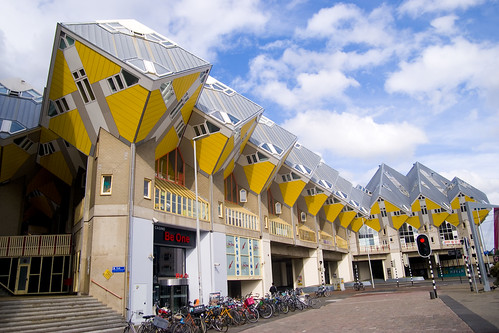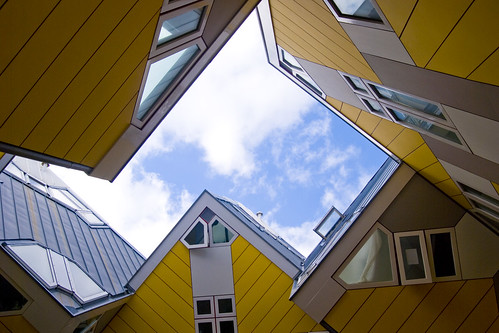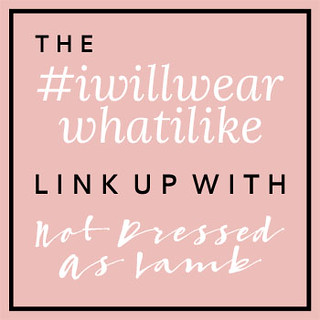The Netherlands Diary #2: Delft & Leiden
Posted: September 8, 2016 Filed under: Travel | Tags: photography, the netherlands, travel 4 CommentsWhile I was in The Hague, I took two day trips to nearby towns, Delft and Leiden. They are good samples of what a typical Dutch town is like – cute canals lined with shops, boats, and houses (and houseboats), with a couple of churches to provide navigation points (most of them are named Oude Kerk & Nieuwe Kerk – Old Church & New Church. Old churches were usually built in medieval times, around 1300s, and new churches were usually built around 1600s.)
 A very romantic-looking houseboat
A very romantic-looking houseboat
Leiden is a bit bigger than Delft thanks to its university, but I think Delft, due to its small size, has more concentrated cuteness. Even then, with both towns, you don’t have to walk far to find a photo-worthy spot. In both places, my friend and I spent most of our time walking along the canals, taking in the sights, people-watching, window-shopping, and stopping at a cafe or a fish-and-chip van when we were tired (no raw herring for me though!)
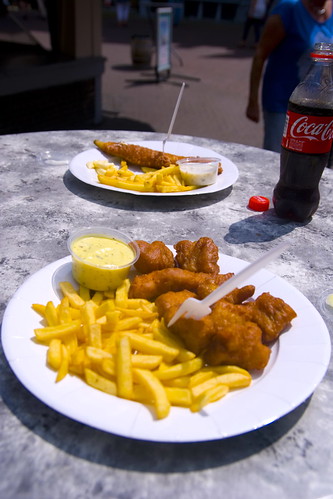
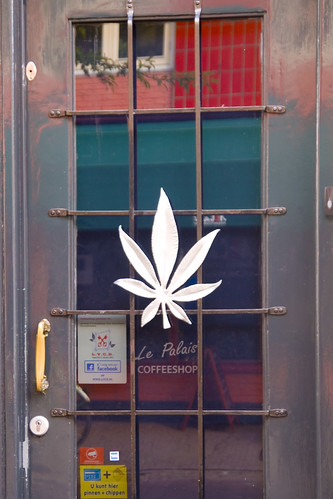
Fish & chips and weed – you can’t get more Dutch than that (no, I didn’t try the weed)
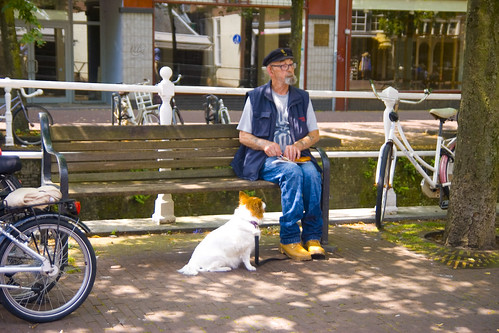 An old sailor we met at the fish&chips van
An old sailor we met at the fish&chips van
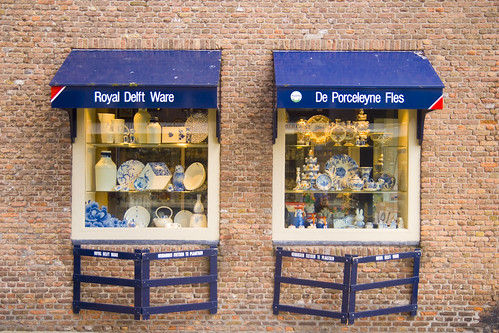 Cheese and Delftware – two of the most popular items on sale
Cheese and Delftware – two of the most popular items on sale
 A common sight on every Dutch street
A common sight on every Dutch street
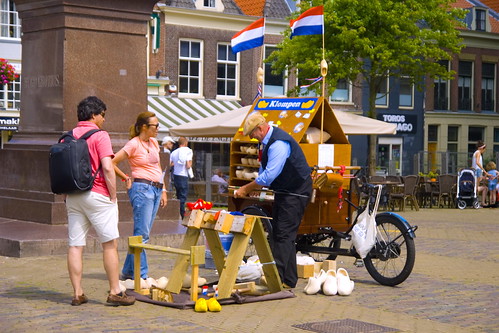 A man making klompen (Dutch clogs) on the main square in Delft
A man making klompen (Dutch clogs) on the main square in Delft
We happened to be in Delft on the day its municipal museum was free, so we spent the afternoon admiring the artwork and gorgeous Delftware. I wish we had time for the Royal Delft Factory as well, but I didn’t mind wandering around. In fact, I prefer to just wander instead of rushing through a place to cross things off a list.
Another thing I noticed about Delft and Leiden (and other Dutch towns too, as I came to realize) is that they have these mini libraries on the street, filled with free books for anyone to take. Of course most of the books are in Dutch, but that is an idea I can totally get behind.
One last funny anecdote: as we were walking along the outer canals of Delft, my friend suddenly said “Is it me, or is that church tower leaning?” We were pulling out our phones to look it up when a tour boat passed us on the canal, and I overheard the tour guide saying something along the line of “… leaning at a 20 degrees angle.” Turns out the Old Church tower does lean – it’s even called the Dutch Leaning Tower, to differentiate from the one in Italy, you know. We just didn’t notice it because we had only been seeing it from the front!
The Netherlands Diary #1: The Hague & Rotterdam
Posted: September 7, 2016 Filed under: Travel | Tags: photography, the netherlands, travel 2 CommentsIt took a while for me to write up my travels in the Netherlands, not just because I had too many photos to sort through (about 1000+), but also because I was figuring out how to group them together, since it would take too long to give each place its own post. In the end I came up with a system that kind of makes sense – I grouped together towns that are similar in size (big towns, small towns, villages) – but they are not in strict chronological order. Hope you guys don’t mind.
Let’s start with my first stop in the Netherlands: The Hague (my Amsterdam friends are away on business when I arrived, so I stayed with another friend in The Hague first). The Hague is the administrative center of the Netherlands, so it has a more stately air. There are more imposing buildings (a lot of them are embassies) and the ubiquitous canals are small and not a major part of the city like in other Dutch towns. Still, you shouldn’t skip it – the Old Town is pretty, it’s close to other cities and towns so day trips are easy, the Binnenhof (seat of the States General) is gorgeous, and of course, right next door is the Mauritshuis museum, home to “Girl with the Pearl Earring” and “The Goldfinch”. The museum itself is really small (I think it took me about 2 hours to see it all, which is a record for me. Usually a museum takes me at least half a day), but if you love Dutch Golden Age paintings, it’s a must-see.
(Pro tip: I got a Museumkaart for 60 euros, which gave me free access to 400+ museums all over the Netherlands for 31 days – if you have a Dutch address, register it and it’s good for a year. Since most museum entrance fees are between 15 – 17 euro, it more than paid for itself.)

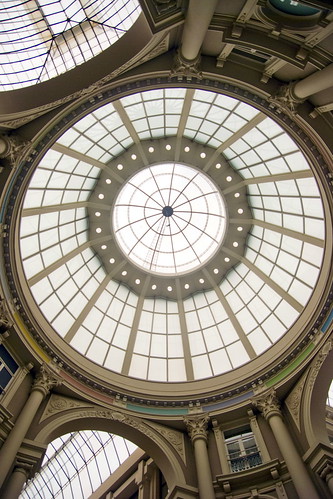
The Goldfinch, and the ceiling of the Old Town’s shopping center
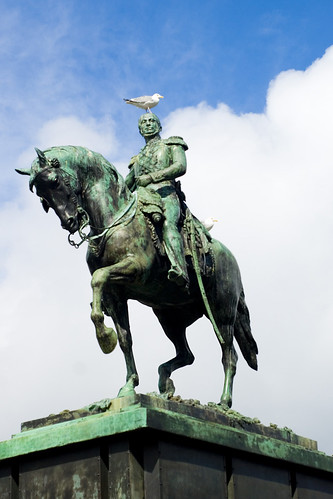

The statue of King William II of the Netherlands, and a… thing on the side of the building in the Old Town
While there, I also visited a weekend flea market, where I bought a couple of cute brooches (they will debut on the blog soon, hopefully), and a farmers market, where I had my first taste of stroopwafel (a famous Dutch snack, made from two thin waffles with a syrup filling). It was too sweet for me, to be honest. I prefer Belgian waffles.
I got the chance to taste more Dutch food when I went to Rotterdam with my friend. We only had half a day there, and half of that was spent at the Kinderdijk windmills (which will have its own post), so we didn’t get to see much of Rotterdam. To make up for our lack of sightseeing, we spent most of our time in its Market Hall, an indoor market that sells everything from fresh fruits and veggies to fish, meat, cheese, and of course, snacks. We ate so much fried food that the next day I was actually craving a salad!
 The Market Hall, outside and in
The Market Hall, outside and in
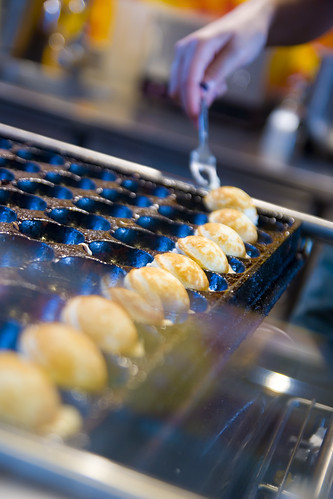

Two more famous Dutch snacks: poffertjes (mini pancakes) and fries
Right next door to the Market Hall is Rotterdam’s famous cube houses, so we did get to see a bit of the city after all. It looks a lot more modern than the rest of the country – makes sense, since most of it was destroyed during WWII and had to be rebuilt. It is usually said that most Dutch towns are versions of Amsterdam, except for The Hague and Rotterdam, so I’m glad I got to see them both before I arrived in the capital.
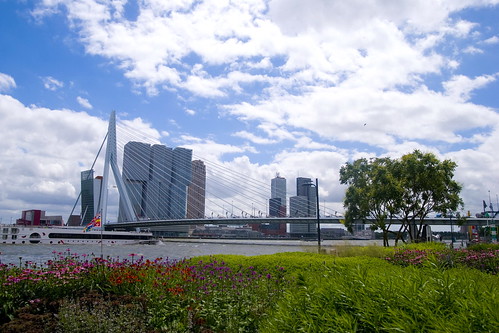 Another famous landmark of Rotterdam – the Erasmus Bridge
Another famous landmark of Rotterdam – the Erasmus Bridge
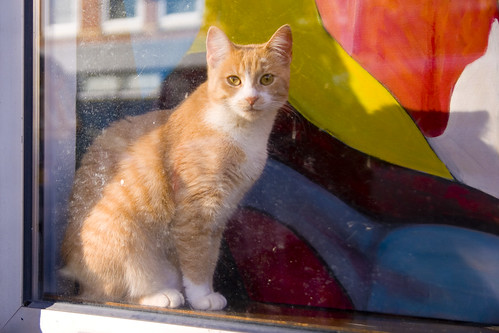 And of course, I always found the local cat
And of course, I always found the local cat

